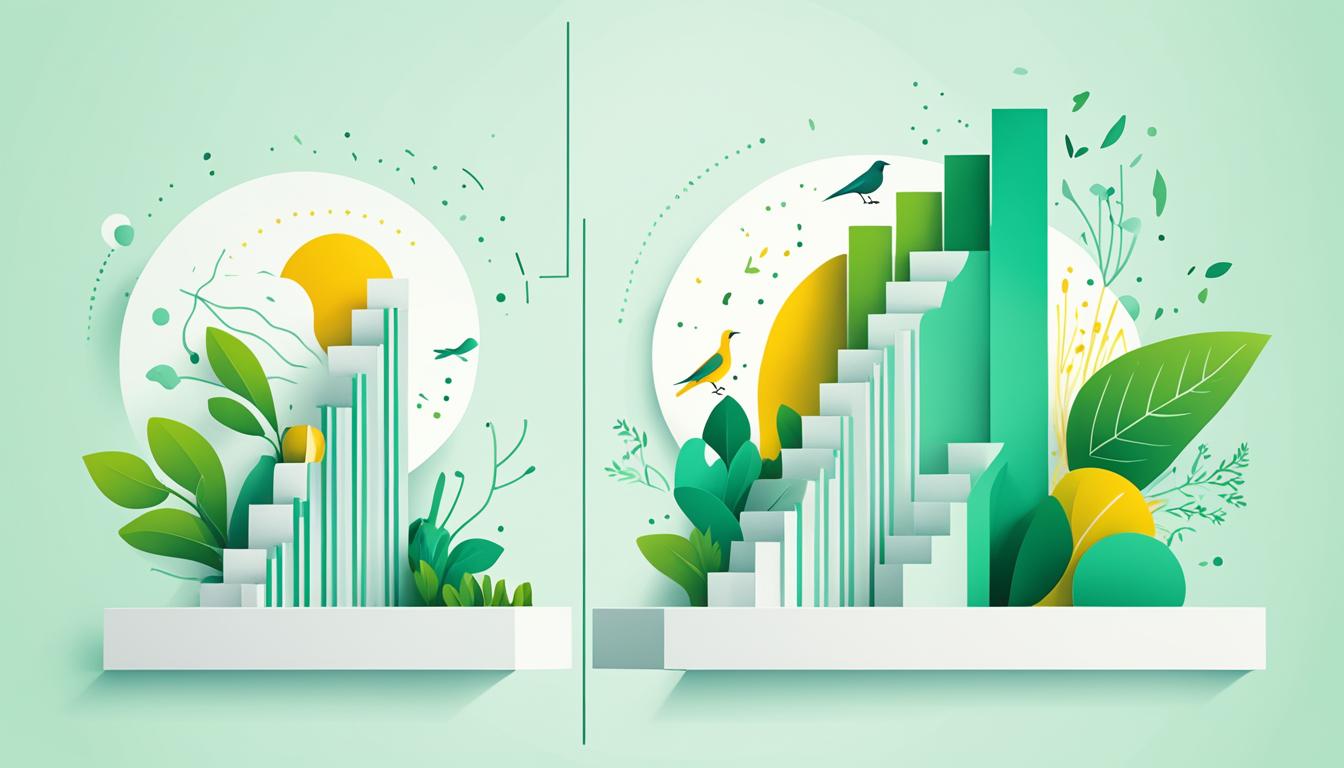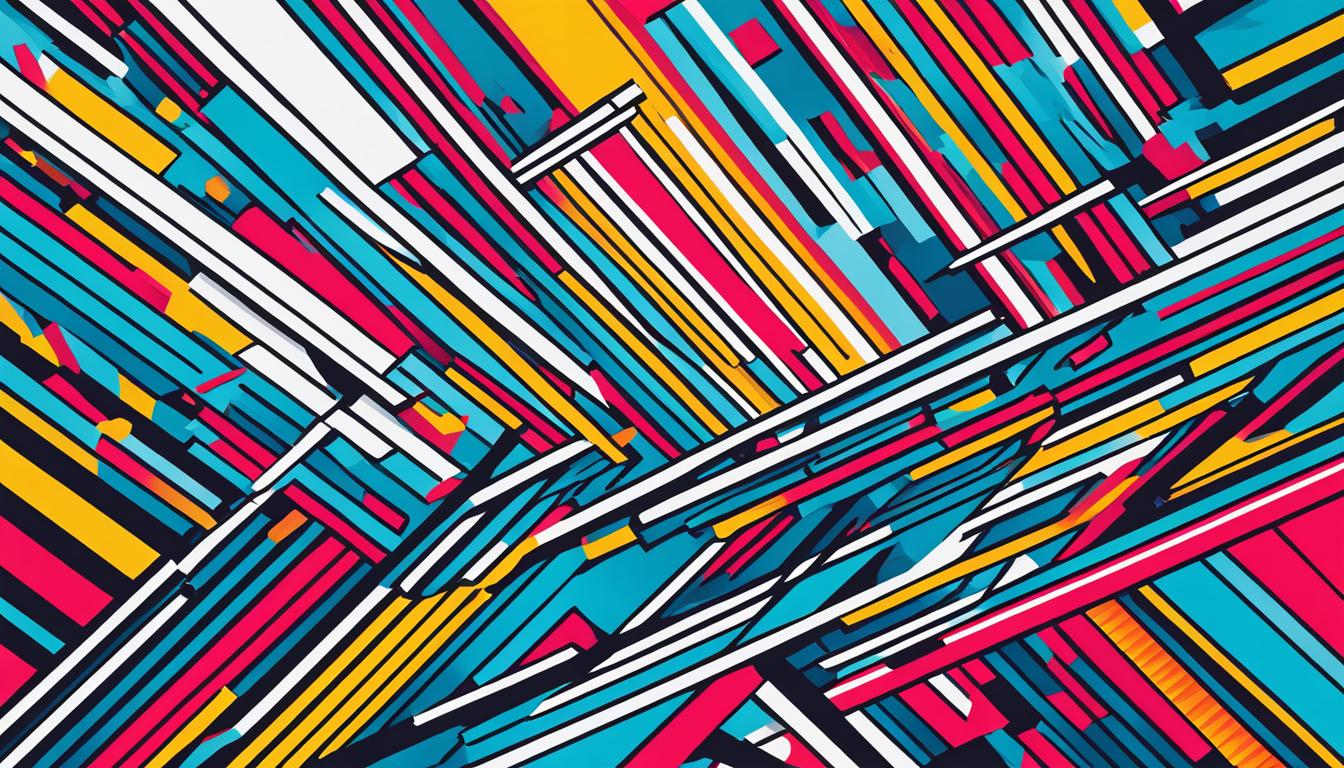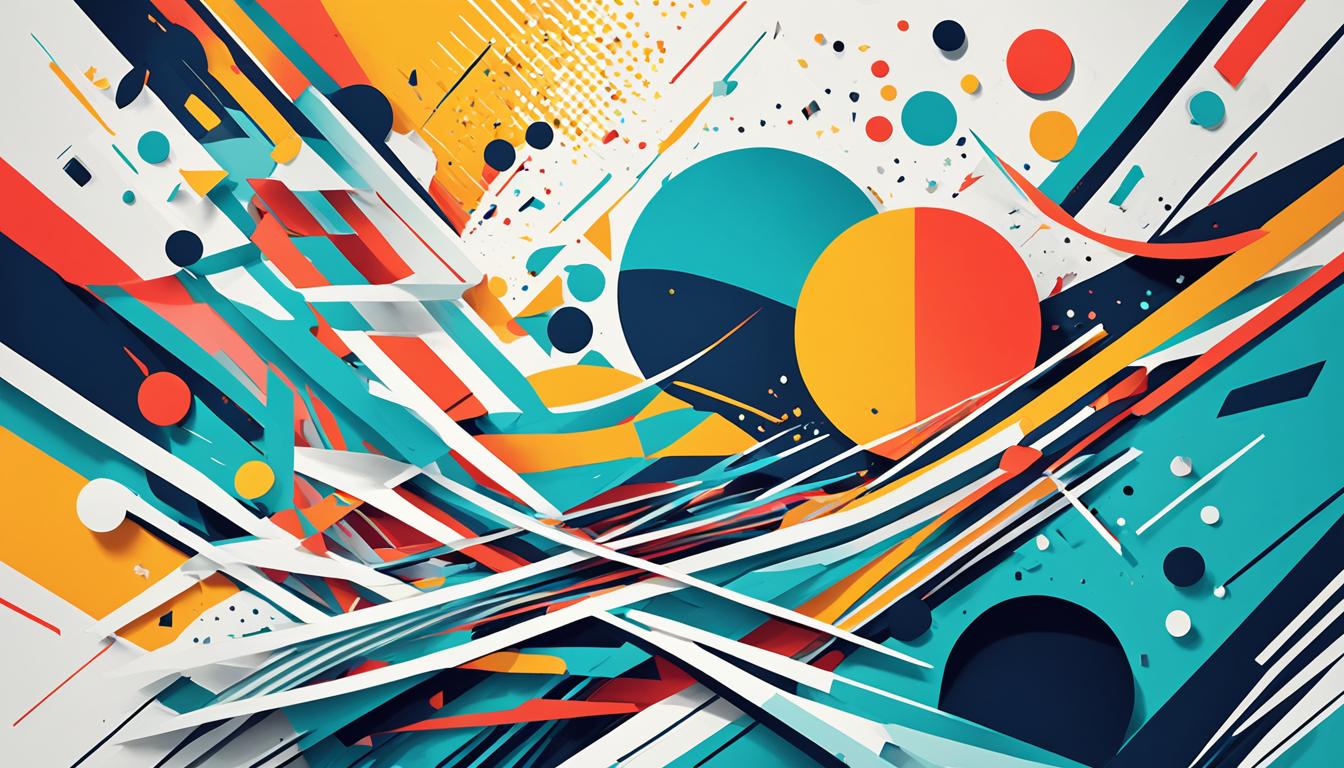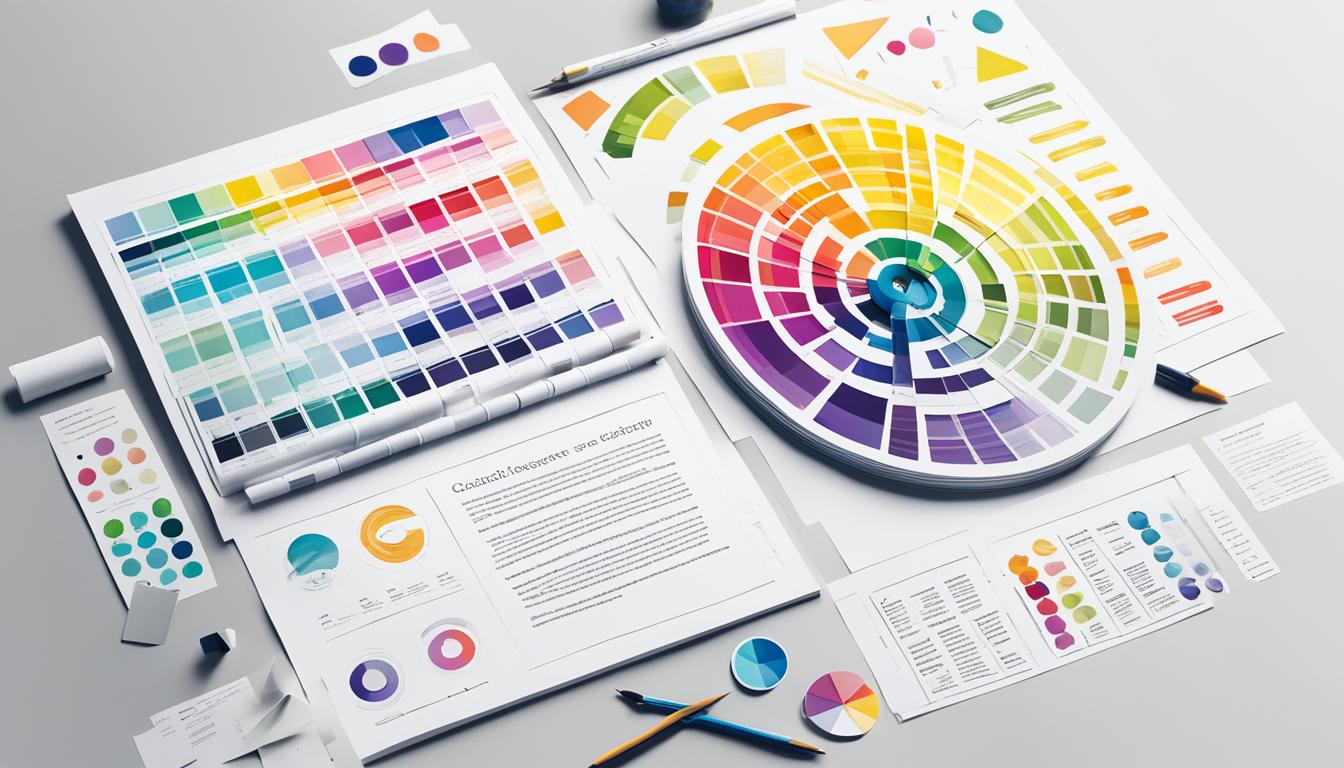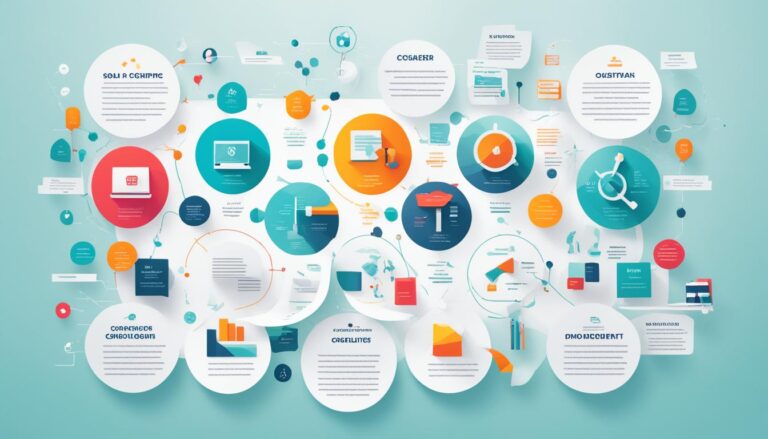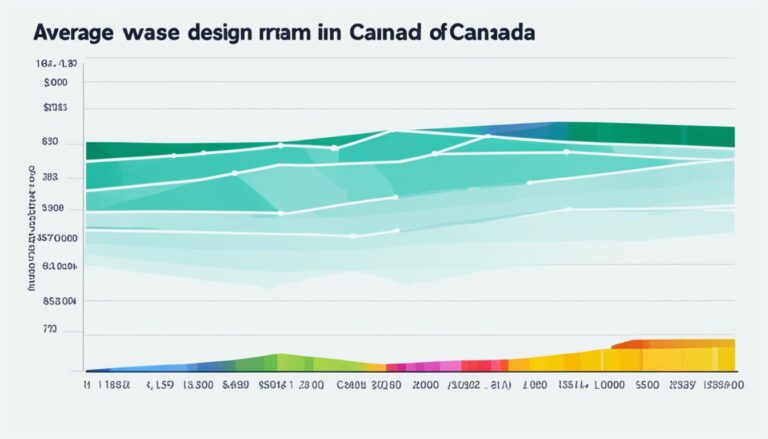Mastering How to Graphic Design: Tips & Tricks
Graphic design is an art form that combines creativity and technical skills to elevate visuals and captivate audiences. Whether you are a beginner or an experienced designer, learning new tips and tricks can enhance your design capabilities and take your projects to the next level.
In this article, we will explore essential techniques that can help you master the art of graphic design. From building a strong design foundation to harnessing the power of grids, experimenting with typography, and staying updated with design trends, we’ll cover key aspects of graphic design that will empower you to create visually compelling experiences.
So, let’s dive in and discover how you can enhance your graphic design skills and create captivating visuals that leave a lasting impression.
Embrace a Strong Design Foundation
Building a solid foundation is crucial for any graphic designer. It is essential to invest time in learning design principles such as balance, contrast, hierarchy, and color theory. These design principles provide a framework for creating visually appealing and effective designs.
Understanding these fundamental concepts will help in creating visually engaging typography, experimenting with grid-based designs, and using color effectively to highlight key elements.
A strong design foundation forms the basis for impactful and visually appealing designs. By applying balance, contrast, hierarchy, and color theory, designers can create harmonious compositions that captivate the audience.
“Design is not just what it looks like and feels like. Design is how it works.” – Steve Jobs
Balance
Balance plays a pivotal role in creating aesthetically pleasing designs. It refers to the distribution of visual weight in a composition. Achieving balance ensures that no single element overpowers the others, creating a sense of equilibrium and visual stability.
Contrast
Contrast adds visual interest and helps distinguish between different elements. By using contrasting elements such as size, color, and typography, designers can create emphasis and highlight key information. It creates visual impact and keeps the viewer engaged.
Hierarchy
Hierarchy is essential for organizing information and guiding the viewer’s attention. By establishing a clear hierarchy, designers can direct the viewer’s focus and create a logical flow of information. It helps in improving readability and ensuring that the most important elements stand out.
Color Theory
Color theory explores the psychological and emotional impact of colors. Understanding color psychology helps designers choose colors that evoke the desired mood or response. By using a well-coordinated color palette, designers can create visually harmonious compositions that enhance the overall aesthetic appeal.
Experiment with Typography
Typography is an integral part of graphic design that can greatly influence the overall impact and visual appeal of your designs. By experimenting with different font pairings, sizes, and styles, you can create typography that engages and captivates your audience.
When selecting fonts, it is crucial to consider readability. Ensure that the chosen fonts are clear and legible, especially when it comes to body text. However, for headlines or emphasis, you have more creative freedom to explore unique and eye-catching typefaces.
The combination of fonts, known as font pairings, is a key element in creating visually engaging typography. Pairing fonts with contrasting characteristics can create a sense of balance and visual interest in your designs. For example, pairing a bold and modern font with a more elegant and delicate one can create a dynamic and visually appealing composition.
Moreover, the chosen typography should align with the message and tone of your design. Different fonts evoke different emotions and convey specific messages. A playful and whimsical font may be suitable for a design targeting children, while a sleek and minimalist font may be more appropriate for a professional and corporate setting.
Remember, typography is not just about choosing beautiful fonts; it is about using them strategically to complement your design and enhance the overall message you want to convey.
To further enhance the visual impact of your typography, consider incorporating elements such as hierarchy, alignment, and spacing. These elements help create a sense of structure and guide the viewer’s attention through your design.
To illustrate the power of typography in graphic design, take a look at the following visually engaging examples:
| Design | Font Pairing | Readability | Message & Tone |
|---|---|---|---|
| Sans-serif + Script | High | Playful and inviting | |
| Serif + Sans-serif | Medium | Elegant and professional | |
| Handwritten + Bold | Low | Artsy and creative |
As you can see from these examples, typography has the power to enhance the overall visual aesthetic of a design and amplify its message and tone. By experimenting with font pairings, ensuring readability, and aligning the typography with the design’s purpose, you can create visually striking compositions that leave a lasting impression on your audience.
Harness the Power of Grids
Grid systems play a vital role in graphic design, providing structure and organization to layouts. When utilized effectively, grids create a harmonious visual arrangement that enhances the overall design composition. By experimenting with grid-based designs, designers can achieve visual coherence and alignment in their work.
The use of grid systems guides the placement of elements within a design, resulting in cleaner and more professional-looking compositions. A well-implemented grid ensures that all elements are properly aligned and balanced, creating a sense of order and structure. This organization enhances the readability and navigability of the design, making it easier for viewers to engage with the content.
Grids also enable designers to create dynamic layouts that adapt to different media and screen sizes. By defining consistent measurements and spacing within the grid system, designers can ensure the design remains cohesive across various platforms.
Whether it’s a website, print publication, or social media graphic, utilizing grid systems allows for precise placement and alignment of text, images, and other design elements. The result is a professional-looking composition that captures attention and delivers information effectively.
Experimenting with different grid systems and layouts enables designers to explore innovative ways to present information and create visually appealing designs. By harnessing the power of grids, designers can continue to push the boundaries of creativity while maintaining a structured and organized approach to their work.
Master the Art of Color
Color selection plays a vital role in graphic design as it has the power to evoke emotions, convey messages, and enhance the overall impact of your designs. By understanding color psychology and exploring different color palettes, you can create visually striking compositions that captivate your audience.
Color psychology is the study of how different colors affect human behavior and emotions. By incorporating this knowledge into your designs, you can create a cohesive visual experience that resonates with your audience. For example, warm colors like red and orange can evoke feelings of energy and excitement, while cool colors like blue and green can evoke a sense of calmness and relaxation.
Creating Harmonious Color Palettes
When selecting colors for your designs, it’s essential to consider the overall mood and message you want to convey. Harmonious color palettes are combinations of colors that work well together and create a visually pleasing composition. They can be achieved by using color schemes such as complementary, analogous, or monochromatic.
“Color is a power which directly influences the soul.”
– Wassily Kandinsky
Complementary colors are opposite each other on the color wheel, which creates a high contrast and vibrant effect. Analogous colors are adjacent to each other and create a harmonious and cohesive feel. Monochromatic color schemes use variations of a single color, resulting in a subtle and elegant composition.
To help you in selecting the right colors and creating harmonious palettes, there are various online tools and resources available. Color palette generators like Adobe Color, Coolors, and Canva’s Color Palette Generator allow you to explore different color combinations and export them for your design projects. These tools can save time and ensure that your color choices are visually pleasing and aligned with your design objectives.
Using Color Effectively
Once you have selected your color palette, it’s important to use color effectively to highlight key elements in your designs. By strategically applying color, you can draw attention to important information and create a visual hierarchy.
Consider using bold and saturated colors for focal points or call-to-action buttons, while using more subdued and neutral colors for supporting elements. This contrast will make your designs visually striking and guide the viewer’s attention to the most critical aspects of your composition.
Keep in mind that color can also affect legibility, so it’s essential to pay attention to the contrast between the background and the text. High contrast will ensure that your text is easily readable and accessible to your audience.
| Color Selection Tips | Example |
|---|---|
| Select colors that align with the brand identity | For a wellness brand, choose calming and soothing colors like blues and greens. |
| Consider cultural and regional associations | In certain cultures, red symbolizes luck and prosperity. |
| Experiment with color combinations to achieve desired moods | Combining warm and cool colors for a balanced and dynamic composition. |
Stay Updated with Design Trends
In the ever-evolving field of graphic design, staying updated with the latest design trends is crucial. By staying in tune with the industry’s evolving landscape, you can find inspiration, discover emerging trends, and create standout designs that blend current trends with your unique style.
One way to stay informed about design trends is by following reputable design blogs and websites. These platforms often showcase the latest design innovations, provide insights into emerging trends, and offer inspiration for your own projects. They are a valuable resource for keeping up with the ever-changing design landscape.
Additionally, social media platforms such as Instagram, Pinterest, and Behance can provide a constant stream of inspiration from fellow designers, studios, and design influencers. By following relevant accounts and exploring trending hashtags, you can discover new design styles, techniques, and concepts that can spark your creativity.
Attending design conferences and workshops is another excellent way to gain inspiration and insights into emerging design trends. These events often feature industry-leading speakers, interactive workshops, and networking opportunities, allowing you to connect with like-minded designers and professionals. By immersing yourself in the design community, you can stay ahead of the curve and incorporate the latest trends into your work.
Remember, staying updated with design trends doesn’t mean blindly following every trend. It’s essential to blend these trends with your unique style and design philosophy. This balance will allow you to create standout designs that captivate your audience and set you apart from the competition.
As a graphic designer, your ability to adapt to evolving design trends while infusing them with your unique style is key to creating standout designs that leave a lasting impression. By embracing the latest trends, finding inspiration from various sources, and blending them with your own creative voice, you can create visually captivating and unique designs that push the boundaries of what is possible.
Seek Feedback and Learn from Others
As a graphic designer, seeking feedback is an invaluable practice that promotes growth and improvement. Constructive criticism offers invaluable insights, allowing you to refine your skills and elevate your designs to new heights. Engaging with peers, mentors, and online design communities provides an opportunity to learn from others’ experiences and gain valuable perspectives.
Participating in design challenges is an excellent way to push your boundaries and expand your skill set. These challenges present unique problems that require innovative solutions, helping you think outside the box and develop a broader design perspective. By tackling design challenges, you can sharpen your problem-solving abilities and discover new creative approaches.
Constructive criticism is the key to growth as a designer. Embrace feedback, learn from others, and continuously strive for professional development.
Interacting with fellow designers and joining design communities encourages collaboration and knowledge sharing. Active participation in online forums, social media groups, and design communities fosters connections, enables idea exchange, and provides valuable resources. Through these interactions, you can gather inspiration, gain feedback, and stay updated with the latest trends and industry news.
Learning from the experiences of other designers is essential to broaden your design perspective. By studying their work, reading design case studies, and engaging in discussions, you can gain insights into different design processes, problem-solving techniques, and innovative approaches. This exposure empowers you to explore new possibilities and discover fresh ideas for your design projects.
Benefits of Seeking Feedback and Learning from Others:
- Receive constructive criticism to refine your design skills
- Expand your perspective through exposure to diverse design styles and approaches
- Participate in design challenges to push your creative boundaries
- Build connections and foster collaboration within design communities
- Stay updated with the latest design trends and industry news
Embrace the opportunity to seek feedback, actively engage with design communities, and continuously learn from others in order to evolve as a well-rounded and skilled designer.
Conclusion
Embarking on a graphic design journey requires dedication, practice, and a commitment to continuous learning. By following the essential tips and tricks outlined in this article, you can enhance your design skills and create compelling visual experiences.
First and foremost, establishing a strong design foundation is paramount. Understanding the principles of balance, contrast, hierarchy, and color theory provides a solid framework for creating visually appealing designs that capture attention.
Experimenting with typography allows you to create visually engaging text that aligns with the message and tone of your designs. Additionally, harnessing the power of grids brings organization and structure to your compositions, resulting in professional-looking layouts.
Mastering the art of color selection and utilizing color psychology enables you to evoke emotions, convey messages, and create harmonious designs. Staying updated with design trends and blending them with your unique style ensures your creations stand out in a constantly evolving field.
Engaging with design communities, seeking feedback, and learning from others are invaluable opportunities for growth as a designer. Constructive criticism provides insights and allows you to broaden your design perspective.
Remember, your graphic design journey is a continuous process. Embrace dedication, practice tirelessly, and always strive for continuous learning. By following these principles, you’ll enhance your design skills and create compelling visual experiences that leave a lasting impact.
FAQ
What is graphic design?
Graphic design is a dynamic and ever-evolving field that involves blending creativity, technical skills, and an eye for aesthetics to create visually appealing and effective designs for various mediums.
Why is building a strong design foundation important?
Building a strong design foundation is important because it provides a framework for creating visually engaging designs and helps in creating a cohesive visual experience for the audience.
How does typography impact graphic design?
Typography plays a significant role in graphic design and can greatly impact the overall look and feel of designs. It includes exploring different font pairings, sizes, and styles to create visually engaging typography that aligns with the message and tone of the design.
What are grid systems in graphic design?
Grid systems provide structure and organization to designs and help achieve visual coherence and alignment. They guide the placement of elements, resulting in cleaner and more professional-looking compositions.
Why is color selection important in graphic design?
Color selection in graphic design can evoke emotions, convey messages, and enhance the overall impact of designs. Learning about color psychology and exploring different color palettes helps create harmonious and visually striking compositions.
How can I stay updated with design trends?
You can stay updated with design trends by following design blogs, social media accounts, and attending design conferences. This provides inspiration and insights into emerging trends, which can be blended with your unique style to create standout designs.
Why is seeking feedback important in graphic design?
Seeking feedback from peers, mentors, or online design communities is crucial for growth as a designer. Constructive criticism helps refine skills and provides an opportunity to learn from others, broadening your design perspective.
How can I enhance my graphic design skills?
To enhance your graphic design skills, dedicate time to practice and continuous learning. Embrace a strong design foundation, experiment with typography, harness the power of grids, stay updated with design trends, and seek feedback to evolve as a designer and create compelling visual experiences.
